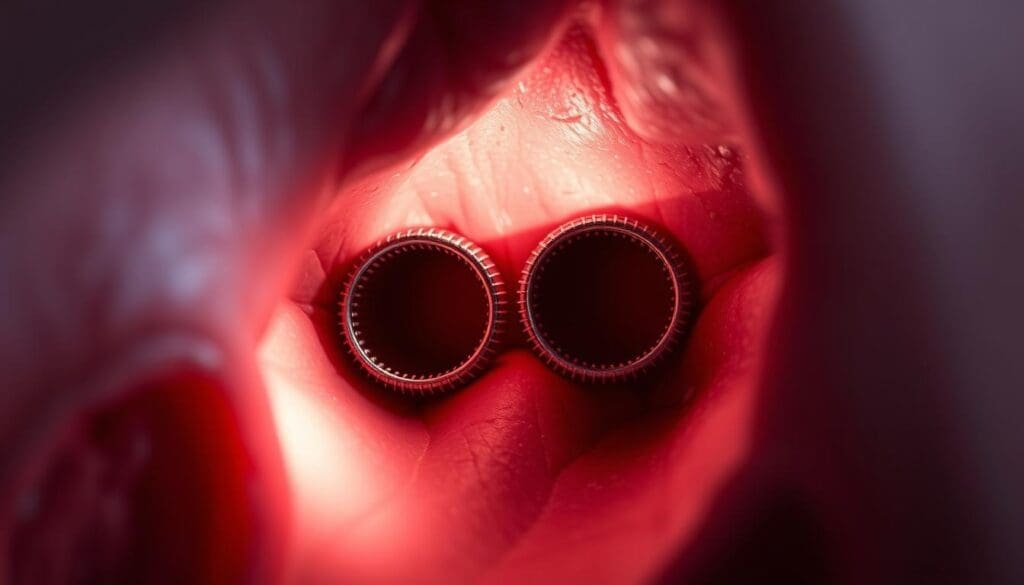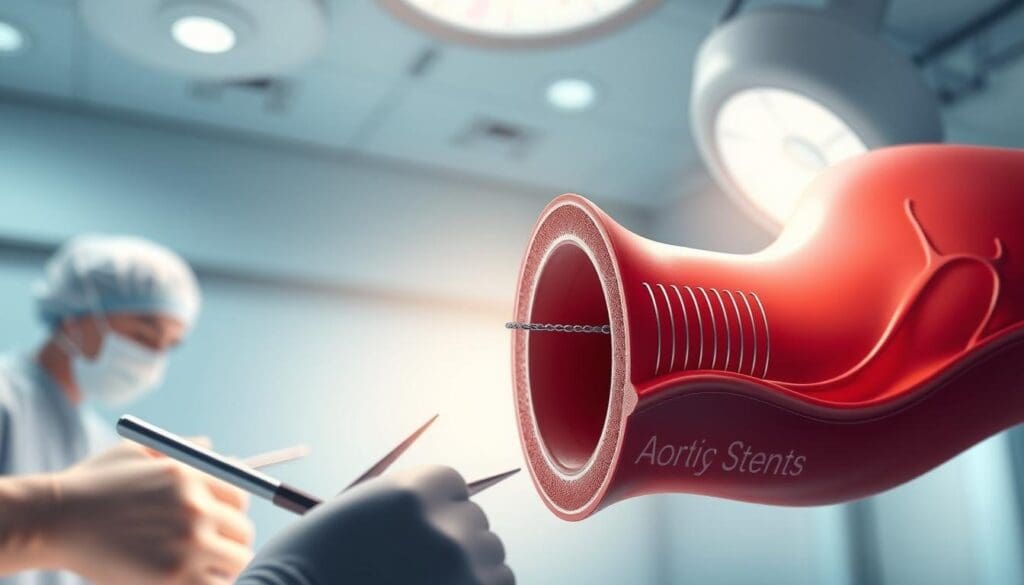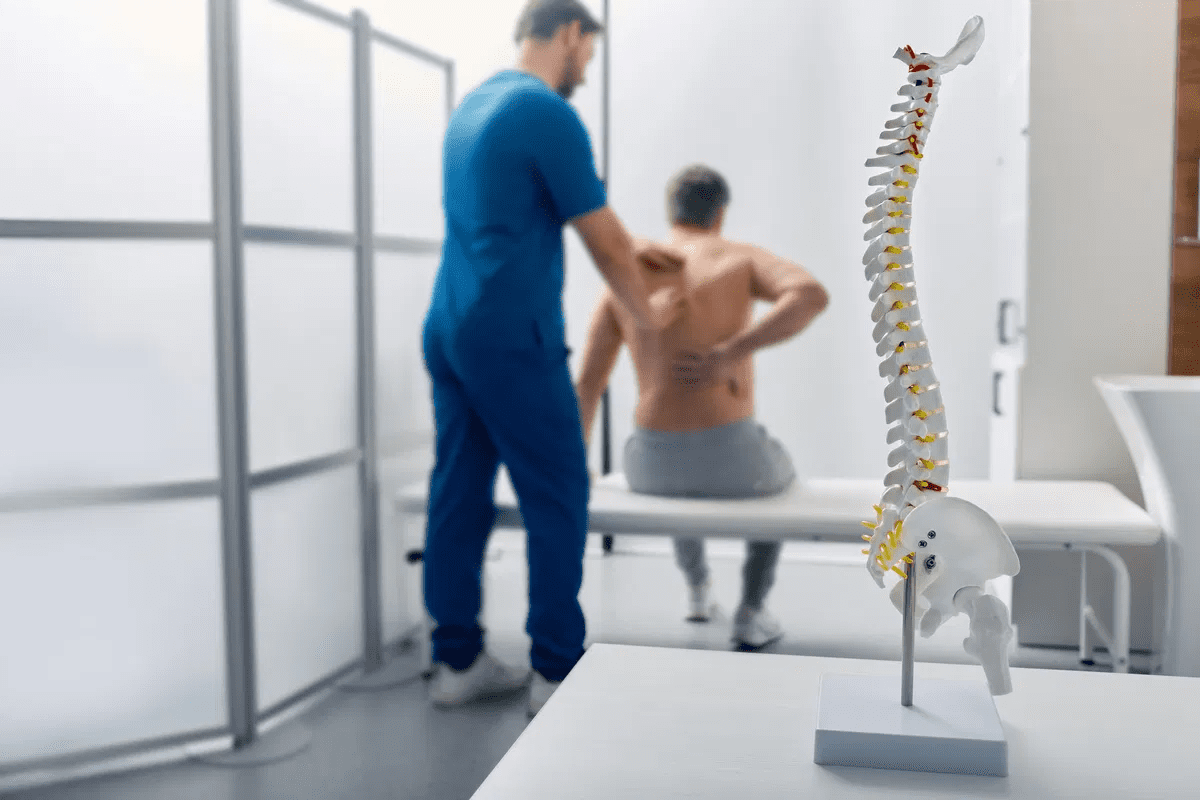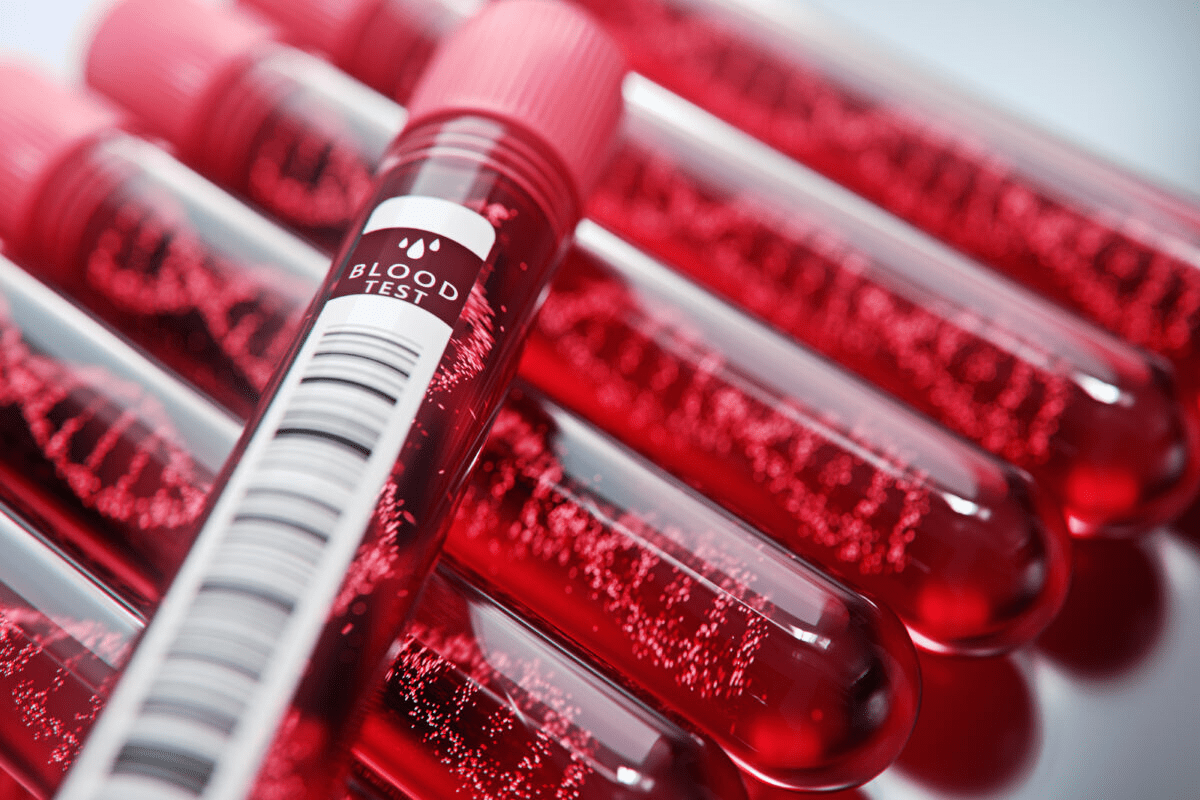Last Updated on November 26, 2025 by Bilal Hasdemir

Treating aortic aneurysms with stent grafts is a complex process. It needs careful planning. Aortic aneurysm stent grafts are advanced tools used to fix weakened or bulging parts of the aorta, often in the abdomen. Understand how aortic aneurysm stent grafts treat aneurysms and what recovery and care steps follow.
A minimally invasive method, like endovascular aneurysm repair (EVAR), is now the go-to for many abdominal aortic aneurysm (AAA) cases. Modern aorta stents are put in through small cuts. This makes surgery shorter and recovery faster than old methods.
Key Takeaways
- Stent grafts treat weakened or bulging sections of the aorta.
- Endovascular aneurysm repair (EVAR) is a standard procedure for abdominal aortic aneurysm (AAA).
- Minimally invasive techniques reduce surgery times and recovery.
- Aorta stent surgery is a complex procedure requiring careful planning.
- Modern stent grafts are designed for durability and compatibility.
Understanding Aortic Aneurysms and Their Risks

It’s important to know the risks and symptoms of aortic aneurysms. This is key for early treatment. Aortic aneurysms are serious and can lead to severe problems if not treated right.
What Is an Aortic Aneurysm?
An aortic aneurysm is a bulge in the aorta’s wall. The aorta is the main artery that carries blood from the heart. This bulge can happen anywhere along the aorta, from the heart to the abdomen.
Aortic aneurysms are divided by where they happen. Those in the chest are called thoracic aortic aneurysms. Those in the abdomen are called abdominal aortic aneurysms (AAAs).
Common Causes and Risk Factors
Many things can cause aortic aneurysms. Smoking is a big risk because it damages artery walls. Other risks include high blood pressure, atherosclerosis (plaque buildup), and a family history of aneurysms.
Men aged 65 to 75 who smoked should get screened once with an abdominal ultrasound. Men in the same age group who never smoked might need screening based on other risks.
| Risk Factor | Description | Impact on Aneurysm Risk |
| Smoking | Damages arterial walls | High |
| High Blood Pressure | Increases pressure on arterial walls | Moderate to High |
| Family History | Genetic predisposition | High |
Warning Signs and Symptoms
Aortic aneurysms often don’t show symptoms until they rupture, which is a serious emergency. Symptoms include pain in the back, stomach, or sides. This pain can be very severe and feel like a tear.
People with risk factors should watch for these symptoms. If they happen, seek medical help right away.
New treatments for abdominal aortic aneurysms have improved patient outcomes. Options like endovascular repair are now available for less invasive treatments.
Benefits of Aortic Aneurysm Stent Procedures vs. Traditional Surgery

Aortic stent surgery has changed how we treat abdominal aortic aneurysms. It’s safer than old-school open surgery. This new method, called endovascular aortic aneurysm repair (EVAR), has many perks. These include less recovery time, lower death rates, and it’s less invasive.
Reduced Recovery Time and Hospital Stay
Aortic stent surgery means you get to go home sooner. EVAR causes less damage and fewer problems. This leads to a faster recovery and shorter hospital stays.
Comparison of Recovery Times
| Procedure Type | Average Hospital Stay | Average Recovery Time |
| Aortic Stent Surgery | 2-3 days | 1-2 weeks |
| Traditional Open Surgery | 7-10 days | 6-12 weeks |
Lower Perioperative Mortality Rates
Endovascular repair of AAA has lower death rates than open repair. EVAR is safer for many patients. It’s less risky because it’s less invasive.
Minimally Invasive Approach Advantages
The aortic stent surgery is less invasive. It means smaller cuts, less blood loss, and lower infection risk. These benefits make the procedure safer and more comfortable for patients.
In conclusion, aortic aneurysm stent procedures have many benefits. EVAR is a good choice for many patients. Knowing these advantages helps patients and doctors make better decisions.
Types of Stent Grafts for Abdominal Aortic Aneurysms
Over 60 percent of AAAs are treated with stent grafts in developed countries. This method is widely accepted. The type of stent graft chosen depends on the aneurysm’s shape and the patient’s health.
Bifurcated Stent Grafts
Bifurcated stent grafts are often used for abdominal aortic aneurysms. They fit the aorta’s split into iliac arteries. This makes them good for aneurysms near the aortic bifurcation.
- Advantages: Good for complex aneurysm shapes, lowers endoleak risk.
- Considerations: Needs precise sizing and placement for a good fit.
Tubular Stent Grafts
Tubular stent grafts are for smaller aneurysms not touching the aortic bifurcation. They’re simpler than bifurcated grafts and fit patients with shorter aneurysms.
Key Benefits: Easier procedure, might mean a quicker recovery.
Fenestrated and Branched Stent Grafts
Fenestrated and branched stent grafts are for complex aneurysms near major arteries. They have special features for blood flow through important arteries.
- Fenestrated grafts are for aneurysms near major branches.
- Branched grafts help blood flow into branch arteries.
Choosing the right stent graft is key for EVAR success. The aneurysm’s size, location, and shape, along with the patient’s vascular anatomy, are important.
Determining Candidacy for Endovascular AAA Repair
Choosing the right treatment for an abdominal aortic aneurysm (AAA) is complex. It involves looking at many factors. Thanks to new treatments, more people can get better care. It’s important to pick the best treatment for each person.
Anatomical Requirements
How big and shaped the aneurysm is matters a lot. So does any other vascular disease. Detailed imaging studies help check these things.
The key things to look at are:
- Aneurysm size and shape
- Presence of other vascular diseases
- Proximity to renal and iliac arteries
Risk Assessment Factors
Looking at how risky the treatment is is also important. Doctors check the patient’s health, like heart disease or diabetes. Cardiac evaluation is key because many people with AAA also have heart problems.
| Risk Factor | Description | Impact on Candidacy |
| Cardiac Disease | Presence of coronary artery disease or heart failure | May require pre-operative optimization |
| Chronic Kidney Disease | Impaired renal function | Requires careful consideration of contrast use |
| COPD | Chronic obstructive pulmonary disease | May affect anesthesia and recovery |
Alternative Options for Non-Candidates
Some people might not be good candidates for endovascular repair. For them, other options like open surgical repair or conservative management are considered. The choice depends on the patient’s health, the aneurysm’s size and symptoms, and what the patient wants.
New ways to do endovascular repair are helping more people. But, it’s very important to carefully check each person to find the best treatment for them.
Pre-Procedure Planning and Preparation
Getting ready for endovascular repair of abdominal aortic aneurysms is key. This step makes sure the stent graft procedure is safe and works well.
Essential Diagnostic Imaging
CT scans and ultrasound are vital in planning. They help figure out the aneurysm’s size and shape. This info is needed to pick the right stent graft.
Medication Adjustments Before Surgery
Changing medications is common before endovascular AAA repair. Some meds might be stopped or changed to lower bleeding risks during and after the surgery.
Patient Instructions and Preparation
Patients get clear instructions for the procedure. This includes avoiding certain meds, eating a specific diet, and other steps. These help keep the patient safe and the procedure successful.
With careful planning and preparation, doctors can lower risks of abdominal aneurysm stent placement. This leads to better results for patients.
Step-by-Step Endovascular Aortic Aneurysm Repair Process
For those at high risk, endovascular aortic aneurysm repair is a key alternative to open surgery. This method is less invasive and involves several important steps. Each step is vital for a successful outcome.
Anesthesia Administration
The first step is giving anesthesia. General anesthesia or local anesthesia with sedation is used, based on the patient’s health and the surgeon’s choice. The right anesthesia ensures the patient is comfortable and the procedure goes well.
Vascular Access Techniques
Vascular access is made through small incisions in the groin area. This allows guide wires and catheters to reach the femoral arteries. It’s a key step for placing the stent graft. The method used here greatly affects the procedure’s success.
Guide Wire and Catheter Navigation
After getting vascular access, guide wires and catheters are guided through the arteries to the aneurysm. This step needs precise imaging to place them correctly. It’s a delicate part of the process, requiring skill and experience.
Stent Graft Deployment Sequence
The last step is deploying the stent graft. The stent graft is carefully placed across the aneurysm and then deployed. This ensures blood flows through the graft and the aneurysm is excluded. The correct sequence of deployment is essential for preventing future issues.
The endovascular aortic aneurysm repair process is complex but effective for high-risk patients. Understanding this procedure helps both patients and healthcare providers see its benefits and challenges.
Post-Procedure Hospital Care Protocol
Hospital care after stent for AAA is complex and requires careful monitoring. Advances in abdominal aortic aneurysm treatment have improved patient outcomes. Effective post-procedure care is key.
Immediate Recovery Monitoring
Patients are watched closely in the ICU or a step-down unit after aortic stent surgery. This is vital for spotting any complications early, like bleeding or stent migration.
- Vital sign monitoring
- Neurological checks
- Assessment of peripheral pulses
Pain Management Strategies
Managing pain well is important for comfort and recovery time. Doctors use various methods, like medication and patient-controlled analgesia, to meet each patient’s needs.
| Pain Management Method | Description | Benefits |
| Patient-Controlled Analgesia | Allows patients to self-administer pain medication | Improved pain control, reduced anxiety |
| Oral Medications | Various oral pain relief medications | Easy to administer, effective for mild to moderate pain |
Early Mobilization Timeline
Moving early is encouraged to avoid problems like deep vein thrombosis and to aid recovery. The timing depends on the patient’s health and the procedure details.
- Initial mobilization within 24 hours post-procedure
- Gradual increase in activity level
- Physical therapy consultation as needed
Discharge Criteria and Planning
Before leaving the hospital, patients must meet certain criteria. This includes stable vital signs, controlled pain, and the ability to do basic tasks. Discharge planning includes teaching patients about follow-up care, managing medications, and recognizing complications.
By sticking to a post-procedure hospital care protocol, healthcare teams can ensure patients get the care they need. This approach helps in achieving the best outcomes and reduces the risk of complications.
Home Recovery After Abdominal Aortic Stent Graft Placement
Recovering at home after getting an abdominal aortic stent graft involves several steps. These steps help ensure a smooth healing process. People who have had abdominal aorta stent placement for aneurysm repair need to follow certain guidelines for a successful recovery.
Activity Restrictions and Gradual Resumption
Right after the procedure, it’s important to avoid heavy lifting, bending, or strenuous activities for weeks. This helps the body heal properly and lowers the risk of complications related to the stent for aortic aneurysm. Patients should:
- Avoid lifting objects heavier than 10 pounds for at least 4-6 weeks.
- Limit strenuous activities, such as exercise or sports, for a period advised by their doctor.
- Gradually resume normal activities as guided by their healthcare provider.
As one medical expert notes, “The key to a successful recovery is patience and adherence to the post-procedure instructions.”
“The recovery phase is just as important as the procedure itself. Patients must be vigilant about their activity levels and report any concerns to their healthcare provider.”
Wound Care Instructions
Proper wound care is essential to prevent infection and promote healing. Patients should:
| Wound Care Task | Instructions |
| Keeping the wound clean | Wash with mild soap and water. Avoid submerging the wound in water until it is fully healed. |
| Monitoring for infection | Watch for signs of redness, swelling, increased pain, or discharge. Report any concerns to your doctor. |
When to Contact Your Doctor
It’s vital to know when to seek medical attention. Contact your doctor immediately if you experience:
- Severe pain or discomfort not relieved by medication.
- Signs of infection, such as fever, redness, or swelling at the wound site.
- Any unusual symptoms or concerns.
By following these guidelines and staying in touch with your healthcare provider, you can ensure a successful recovery after AAA endovascular repair. Carefully managing your recovery at home can minimize complications and improve your outcome.
Long-Term Follow-Up and Monitoring Requirements
Managing patients after endovascular AAA repair is key. A detailed follow-up plan is needed to check the stent graft and the patient’s health.
Imaging Schedule and Protocols
Regular imaging studies are essential to watch the stent graft and catch any issues early. Post-EVAR surveillance considerations suggest CT scans at set times.
“Surveillance imaging is a critical component of long-term care, allowing for the early detection of complications such as endoleaks or stent migration,” emphasizes the importance of a structured imaging schedule.
Ongoing Medication Management
Patients after aortic stent surgery need ongoing medication. This helps prevent complications. Antiplatelet therapy or anticoagulation may be used to lower thrombosis risk.
- Antiplatelet therapy to prevent platelet aggregation
- Anticoagulation therapy to prevent blood clots
- Monitoring for possible bleeding complications
Lifestyle Modifications for Stent Longevity
Living a healthy lifestyle is important for the abdominal aortic graft‘s longevity. Patients should eat well, exercise regularly, and quit smoking.
Vascular specialists say, “A healthy lifestyle can greatly help the long-term success of endo AAA surgery.” It’s also important to manage risks like high blood pressure and high cholesterol.
Following these long-term care and monitoring steps helps patients avoid complications. It also ensures their aortic stent graft lasts longer.
Potential Complications of Aorta Stent Surgery and Management
Aortic aneurysm stent procedures are effective but can have risks. It’s important for patients and doctors to know these risks. This helps in managing and reducing them.
Endoleaks: Types, Detection, and Treatment
Endoleaks are a common issue after EVAR. They happen when blood leaks into the aneurysm sac around the stent. There are different types, each needing its own treatment plan.
- Type I: Leak at the attachment site of the stent graft
- Type II: Retrograde flow from branches
- Type III: Structural failure of the stent graft
- Type IV: Graft porosity
- Type V: Endotension without visible leak
Doctors use imaging like ultrasound or CT scans to find endoleaks. Treatment depends on the leak’s type and how bad it is. It can range from watching it to more serious steps like embolization or more stenting.
Stent Migration and Structural Issues
Stent migration is when the stent moves from its place. This can cause problems like not covering the aneurysm well. Structural problems, like breaks or bends, can also make the stent less effective.
It’s key to keep an eye on these issues early. If found, doctors might need to do more stenting or even open surgery.
Access Site Complications
Problems at the access site, like bleeding or injury, can happen during or after the procedure. These issues often come from how the doctor accesses the blood vessels.
Using careful access techniques and watching the patient after the procedure helps lower these risks.
Systemic Complications and Prevention
Systemic problems, like heart or kidney issues, can happen because of the procedure’s stress or the contrast used. To prevent this, doctors try to make the patient as healthy as possible before the procedure. They also use as little contrast as needed.
After the procedure, it’s important to watch for these problems. If they happen, doctors should act quickly.
Thanks to new treatments, more patients are getting better from abdominal aortic aneurysms. But, it’s vital to understand and handle possible complications for the best care.
Conclusion: Advances and Future Directions in Aortic Aneurysm Treatment
Aortic stent surgery and abdominal aortic aneurysm stenting are key for those at high risk. These methods have shown great results and are getting even better. Research and development keep pushing the boundaries of what’s possible.
The introduction of abdominal aortic aneurysm stent and graft technologies has changed the game. Aortic stent surgery is getting better, leading to better results and faster recovery times for patients.
New studies are looking into more advanced technologies and techniques for AAA repair. The future of treating aortic aneurysms looks bright, with ongoing improvements in stent grafts and other innovative treatments.
FAQ
What is an aortic aneurysm and how is it treated with stent grafts?
An aortic aneurysm is a bulge in the aorta, the main artery. It carries blood from the heart to the body. Stent grafts are used to treat it through a minimally invasive procedure called endovascular aneurysm repair (EVAR).
A stent graft is inserted through the arteries in the groin. It reinforces the weakened section of the aorta.
What are the benefits of aortic aneurysm stent procedures compared to traditional surgery?
Stent procedures have many benefits. They reduce recovery time and hospital stay. They also lower the risk of death during surgery.These benefits make stent procedures a good choice for many patients. This is true, even for those at high risk for surgery.
What types of stent grafts are used to treat abdominal aortic aneurysms?
Several types of stent grafts are used for abdominal aortic aneurysms. These include bifurcated, tubular, fenestrated, and branched stent grafts.The type of stent graft used depends on the aneurysm’s anatomy and the patient’s health.
How is candidacy determined for endovascular AAA repair?
To determine if someone is a candidate for endovascular AAA repair, several factors are considered. These include the aneurysm’s size and shape, and the presence of other vascular diseases.
What is involved in pre-procedure planning and preparation for endovascular AAA repair?
Preparing for endovascular AAA repair is key to success. It involves getting CT scans and ultrasound to measure the aneurysm. Medications may also be adjusted before surgery to reduce risks.
What is the step-by-step process of endovascular aortic aneurysm repair?
The process of endovascular aortic aneurysm repair involves several steps. These include giving anesthesia, accessing the arteries, and deploying the stent graft.Each step is carefully planned and executed to ensure success and minimize complications.
What is the post-procedure hospital care protocol after endovascular AAA repair?
Post-procedure care is vital for successful outcomes. It includes monitoring vital signs and watching for complications. Pain management strategies are also used.
What are the guidelines for home recovery after abdominal aortic stent graft placement?
Recovery at home after stent graft placement requires careful planning. It includes following activity restrictions and wound care instructions. These help avoid complications and promote healing.
What are the long-term follow-up and monitoring requirements after endovascular AAA repair?
Long-term follow-up is essential for the success of endovascular AAA repair. It includes regular imaging and medication management. Lifestyle changes are also important for stent longevity.
What are the possible complications of aorta stent surgery and how are they managed?
Complications of aorta stent surgery include endoleaks and stent migration. Access site complications and systemic issues can also occur. Endoleaks are common and can be treated with additional interventions.
What is the role of abdominal aortic stent graft in treating abdominal aortic aneurysms?
Abdominal aortic stent grafts reinforce the weakened aorta. They are inserted through a minimally invasive procedure. This reduces the risk of rupture and promotes healing.
How does endovascular repair of AAA compare to open surgical repair?
Endovascular repair of AAA is less invasive than open surgery. It offers benefits like shorter recovery times and lower mortality rates. It also has fewer complications compared to open surgery.
References
- Abraha, I., et al. (2016). Thoracic stent graft versus surgery for thoracic aneurysm: A Cochrane review. PMC. https://pmc.ncbi.nlm.nih.gov/articles/PMC7388299/






